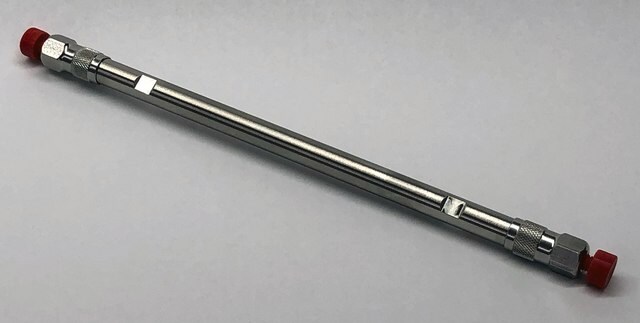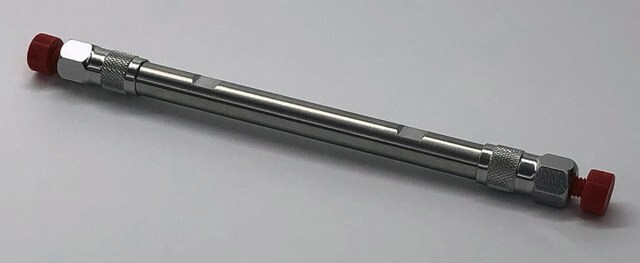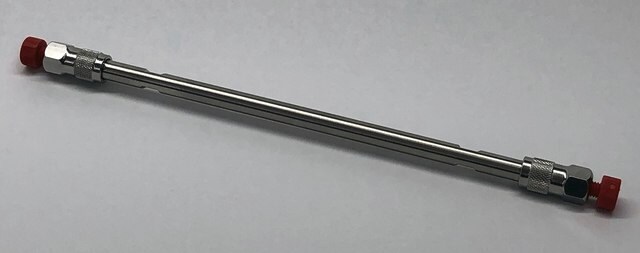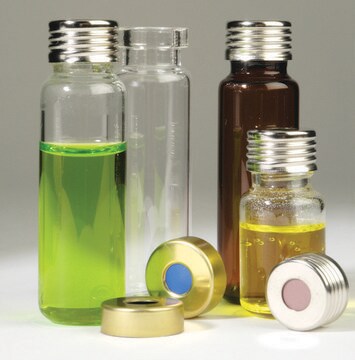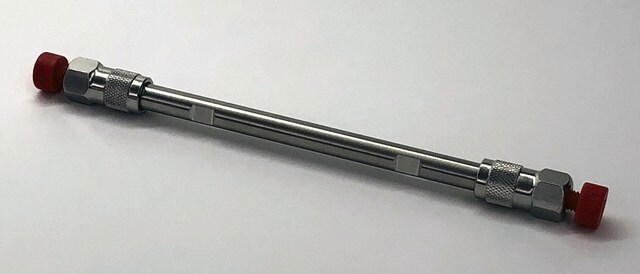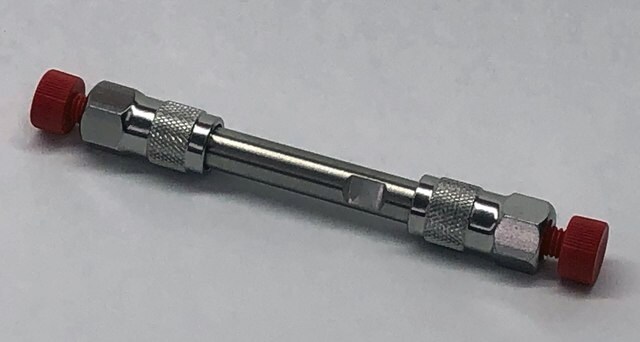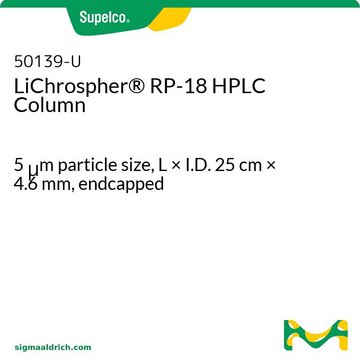50813-U
Ascentis® Express C18, 2 μm UHPLC Column
2 μm particle size, L × I.D. 10 cm × 2.1 mm
About This Item
Recommended Products
material
stainless steel column
Quality Level
Agency
suitable for USP L1
product line
Ascentis®
feature
endcapped
manufacturer/tradename
Ascentis®
packaging
1 ea of
parameter
1000 bar max. pressure (14500 psi)
60 °C temp. range
technique(s)
HPLC: suitable
LC/MS: suitable
UHPLC-MS: suitable
UHPLC: suitable
L × I.D.
10 cm × 2.1 mm
surface area
120 m2/g
impurities
<5 ppm metals
matrix
Fused-Core particle platform
superficially porous particle
matrix active group
C18 (octadecyl) phase
particle size
2 μm
pore size
90 Å pore size
operating pH
2-9
application(s)
food and beverages
separation technique
reversed phase
Looking for similar products? Visit Product Comparison Guide
Related Categories
Legal Information
related product
Choose from one of the most recent versions:
Certificates of Analysis (COA)
Don't see the Right Version?
If you require a particular version, you can look up a specific certificate by the Lot or Batch number.
Already Own This Product?
Find documentation for the products that you have recently purchased in the Document Library.
Customers Also Viewed
Articles
-THC solution, 1.0 mg/mL in methanol, ampule of 1 mL, certified reference material; Cannabichromene solution, 1.0 mg/mL in methanol, ampule of 1 mL, certified reference material
Pesticide residue testing of turmeric and other (dried) spices is challenging due to their complex compositions and high matrix. An efficient SPE clean-up can be achieved by a new Dual-layer cartridge.
The odor and pungency of ginger is due to the presence of terpenes, gingerols and shogaols. These compounds contribute to the highly complex matrix of ginger, which subsequently presents a challenge in low level analyses of contaminants. A novel 2-layer SPE cartridge efficiently reduces background for pesticide determination.
Separation of Estriol 3-(β-D-glucuronide) sodium salt; β-Estradiol 3-(β-D-glucuronide) 17-sulfate dipotassium salt; Estriol 3-sulfate sodium salt; β-Estradiol 3,17-disulfate dipotassium salt, ≥95%; β-Estradiol 17-(β-D-glucuronide) sodium salt; β-Estradiol 3-(β-D-glucuronide) sodium salt; Estrone 3-(β-D-glucuronide) sodium salt; β-Estradiol 3-sulfate sodium salt, ≥93%; Estriol, ≥97%; Estrone 3-sulfate sodium salt, contains ~35% Tris as stabilizer; β-Estradiol, ≥98%; α-Estradiol, powder, ≥98% (TLC); Estrone, ≥99%
Our team of scientists has experience in all areas of research including Life Science, Material Science, Chemical Synthesis, Chromatography, Analytical and many others.
Contact Technical Service